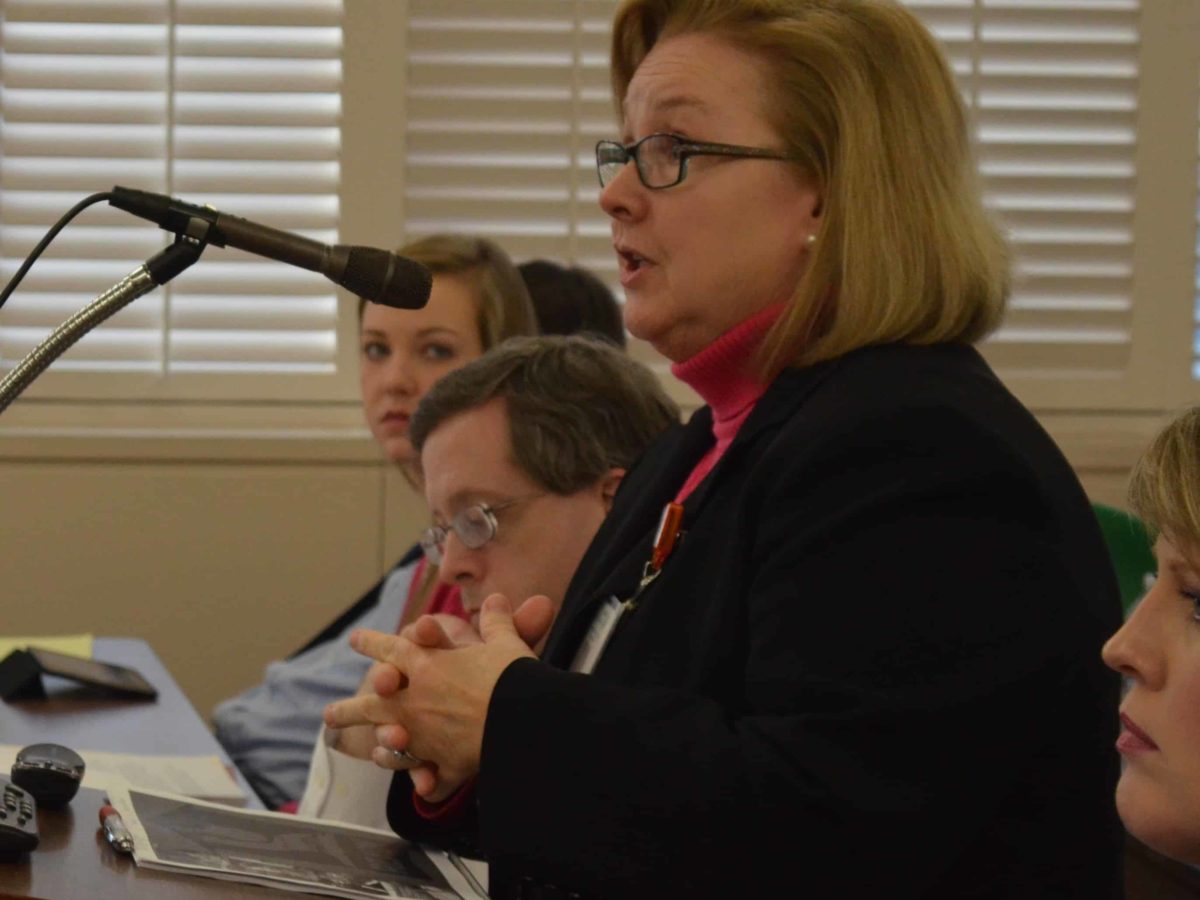

How Effective Are Teachers?
A presentation on teacher evaluations at the State Board of Education last week yielded both good and bad news.
On the plus side, Thomas Tomberlin, director of District LEA Human Resources Support at the Department of Public Instruction, said that beginning teachers show a lot of growth in their first few years of practice.
He looked at new teachers beginning in the 2012-13 school year. And while he noted that their first evaluations are about what you’d expect for those new to education, they improve dramatically over their first three years.
For experienced teachers — those who had four or more years of experience in 2012-13 — their progress remains mostly stagnant over the same years, he said.
He didn’t have an explanation for this but said it was concerning.
“To accept a situation where teachers are allowed to kind of plateau and ride out the rest of their career is antithetical to the educational process,” he said.
Low-Performing Schools
The more worrying news about teacher effectiveness came during the point in Tomberlin’s presentation when he discussed teachers in low-performing schools.
When it comes to attrition, he noted that attrition rates in both low-performing schools and schools that are not low performing are pretty even — 22.5 percent for low-performing schools and 22.2 percent for their better-performing counterparts between 2012-13 and 2014-15.
But the problems arose when he began to look into who those respective schools are hiring to replace the teachers who leave.
He said teacher effectiveness among new hires at schools that are not low performing is higher than at low-performing schools. Thirteen percent did not meet and 13 percent exceeded expected growth in the 2012-13 school year, and 19 percent did not meet and 20 percent exceeded expected growth in 2014-15 at schools that are not low performing.
At low-performing schools, the number of teachers not meeting expected growth (24 percent) is almost double that of their better-performing counterparts in 2012-13. At the same time, the number of teachers exceeding expected growth (4 percent) at low-performing schools is less than half that of schools that are not low performing for that year.
The numbers improve only slightly for 2014-15. In low-performing schools, newly hired teachers not meeting expected growth is 28 percent, and those exceeding expected growth is 10 percent — half that of schools that are not low performing for that year.
“If this trend continues, these schools have very little chance of emerging from low-performing status,” Tomberlin said.
Proof of Concept Update
Last month, the State Board of Education received a report on a survey given to parents and teachers following the first interim assessments in October. We reported on the survey in December. Because of time, no presentation was given last month. Instead, the State Board heard about those results this month.
Recall that a task force formed by the State Board of Education has suggested sweeping changes to the testing landscape in North Carolina. To test the new plan, the State Board of Education has launched a proof of concept study to examine the feasibility of the changes. The study is looking at three interim assessments and one modified EOG.
Tammy Howard, director of accountability services at DPI, provided some context on the survey results last week.
For instance, the survey showed that more teachers participated in English Language Arts (ELA) professional development in August than mathematics. About 61 percent of respondents said they didn’t attend the mathematics professional development.
Howard pointed out that the ELA professional development took place via a webinar, whereas the mathematics professional development was face-to-face.
When it came to impact on instruction, the results between mathematics and ELA professional development were starkly different.
Most of the respondents either strongly agreed or agreed — 64.1 percent — that the mathematics professional development had an impact on instruction prior to the assessment. But that percentage dropped to 35.6 percent for ELA, with 43.8 percent neither agreeing or disagreeing.
Howard pointed out that these results may have something to do with the way the standards are set up.
In mathematics, she said the standards are chunked. That is, each standard is distinct from the others. In English, she described the standards as spiraled.
“English Language Arts there is going to be a repeat of that information throughout the year,” she said.
Other updates on the proof of concept include the fact that the second interim is now taking place in participating schools.
Dr. Tiffany Perkins, director of curriculum and instruction at DPI, also went over some next steps for the proof of concept study.
The roll-out of the testing changes begins this year with the proof of concept study. If the study goes well, test development will take place during the next school year along with professional development, which will continue into 2017-18. Communications will take place between the 2016-17 and 2017-18 school years, and technical assistance coaching will come in 2017-18.
The roll-out will expand infrastructure, provide materials and organization, and give support to areas already participating in the new testing regime as well as new support to those coming on board.
Perkins also discussed questions being considered as the state looks at the future, including whether the new assessments will happen in all grades for both mathematics and ELA, or whether implementation will be staggered in some way.
What Else Happened
We have reported in separate articles about some of the other important things to happen at the January State Board of Education meeting, including an extensive discussion on charter schools and the proposed budget reductions for DPI.


